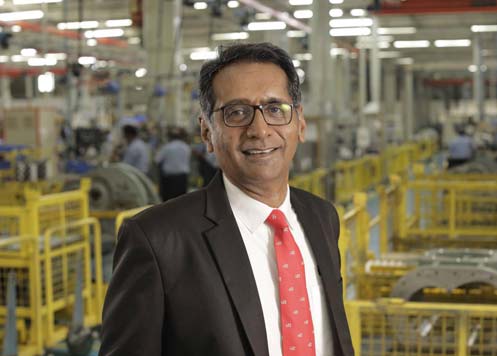Elgi lot more optimistic about strategic growth objectives

Coimbatore headquartered ₹1,924 crore Elgi Equipments, one of the largest manufacturers of air compressors, expects better growth in international markets in coming months, while the Indian market is expected to present incremental growth. The company had set a revenue target of $400 million to be achieved by FY26. Despite disruption caused by the pandemic, it is optimistic about realising its objectives. Jairam Varadaraj, Managing Director of the company, spoke to BusinessLine about market recovery, growing opportunities in international business and the company’s strategic business plan. Excerpts:
Have your businesses returned to normalcy in all markets?
I think we hit normalcy quite a while ago. From the second quarter of last year, we have consistently grown even through the second wave of April, May, June of 2021. Of course, there was a bit of a pause similar to 2020. But unlike 2020, there was bright light at the end of the tunnel in 2021. But even during the pause, we were able to compensate a little bit with supplies for oxygen generators. I would say this is better than normal. Our performance is far better than 2019-20, which was the full year. So, operations wise we are running at full steam. Sales are happening not just in India, but across the world. For me, this is more than normal and sometimes I wonder why it is so? There is no logical explanation of what’s driving the economies in different parts of the world. Sectorally if you look, the China Plus One strategy is benefitting certain segments of the textile industry. But overall, we are seeing a good resurgence of demand across all areas.
Given the disruptions caused by the pandemic, are there any changes in your priorities or growth plans?
We made a strategic business plan in the middle of the pandemic. There was a certain conservativeness with which we built that plan. And we said every year we will revisit that plan, which we have. Right now our view is a lot more optimistic about that plan than when we made it. We’ve not made any changes. We are continuing to drive in the same direction, maybe a little bit more optimistic.
What makes you more optimistic now? Do you see better visibility for growth?
I am not optimistic about the growth of the economy. I still have question marks around it. But, I am quite optimistic about our internal ability to capitalise on opportunities because we have established ourselves in some key markets that are significant. So I’m quite optimistic about the way those initiatives have delivered the numbers. In future, we will not do anything significantly different. Because it’s taken almost 10 years to put together and assemble and install the various market mechanisms that we have done in our strategic markets. Now, it is a matter of consistent and qualitative execution.
Which markets are expected to do well in the near term?
In the near term, Australia will come back because it is well endowed with natural resources, which are in demand worldwide. So, there is a natural economic resurgence that will happen in Australia, and we are already beginning to see it happen. . Similarly, South East Asia will come back strongly. If China plus one strategy percolates across a lot more industries in the country than just one segment of textiles, there could be a huge impact combined with these PLI schemes. Then there could be sustained buoyancy of the Indian market. We expect Europe and the US to be quite strong for us in the future.
What is your strategy to grow in Europe? Will you look at the inorganic route?
In Europe, we have taken an organic growth path as opposed to an inorganic strategy. This is the third year of that plan. Our top line is better than planned and losses are lower than what we projected. So it’s been a positive experience, and we continue to follow that plan for the next couple of years.
Why organic route in Europe? We have so far made five acquisitions and two types of deals — distribution companies as well as manufacturing companies (with their own branded products). The acquisition of the distribution companies has proved to be successful for us, while the purchase of a manufacturing company with our own brand name was not a successful strategy. So, we have given up that strategy. We felt that it was not the right way to utilise our capital. We don’t want to do that anymore.
In America, we acquired a distribution company and decided to grow it organically outside of the area of the distribution company. So, organic growth is the cheapest and the lowest cost route. The velocity of growth may not be as high as inorganic, but it’s certainly a lot less risky and less expensive. Thus, we are putting together an organic growth plan in Europe. Once we reach a certain maturity with that organic plan, we will look at inorganic as a supplement to that.
BUSINESS LINE


